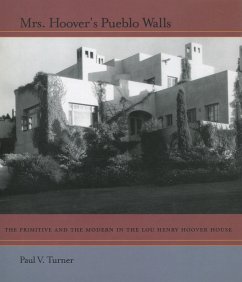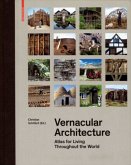Two questions have intrigued observers of the Lou Henry Hoover House, built at Stanford University in 1919 by Lou Henry and Herbert Hoover and now the official residence of the university's president. Who was the building's architect? And what was the motive for its unusual, cubic, flat-roofed, undecorated form? Although professional architects were involved in the project, this book shows that the architect was actually Lou Henry Hoover herself, who conceived the design of the house and worked out its details, using her architects largely for technical matters and to produce the drawings and supervise construction. As for the design, the book argues that it was inspired mainly by the Native American Pueblo architecture of New Mexico and Arizona. Herbert Hoover, in fact, called it a "Hopi house," and Lou referred to her "Pueblo walls," but the Pueblo connection was later denied by others involved in the project. >
Hinweis: Dieser Artikel kann nur an eine deutsche Lieferadresse ausgeliefert werden.
Hinweis: Dieser Artikel kann nur an eine deutsche Lieferadresse ausgeliefert werden.








